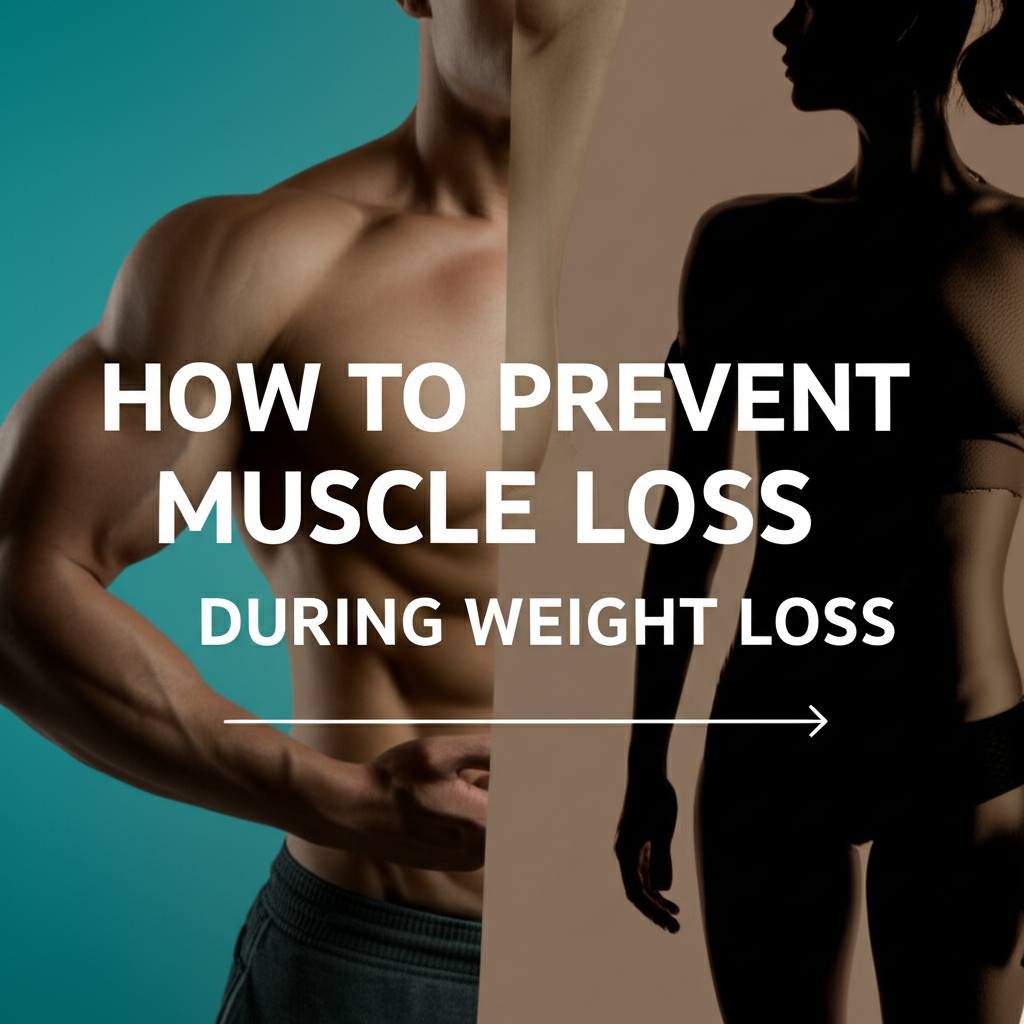How to Prevent Muscle Loss During Weight Loss: Your Guide

How to Prevent Muscle Loss During Weight Loss: Your Guide
Preventing muscle loss during weight loss is achievable by focusing on adequate protein intake, resistance training, and a moderate calorie deficit. This comprehensive guide provides actionable steps to help you shed fat effectively while preserving your hard-earned muscle mass for a healthier, more toned physique.
Key Takeaways

- Prioritize protein in your diet.
- Engage in regular resistance training.
- Maintain a moderate calorie deficit.
- Ensure sufficient sleep for recovery.
- Hydrate consistently throughout the day.
- Consider smart supplementation if needed.
Thinking about shedding some extra pounds? It’s a common goal, but have you ever worried about losing more than just fat? Many people start a weight loss journey only to find their muscles shrinking along with their waistline. This can leave you feeling weaker and less toned, which isn’t the desired outcome. Figuring out how to prevent muscle loss during weight loss can feel complicated, with so much conflicting advice out there. But what if I told you it doesn’t have to be? This guide will walk you through simple, effective strategies to help you lose fat while keeping your muscle. Let’s get started on building a slimmer, stronger you!
Why Muscle Preservation Matters During Weight Loss
When you’re aiming to lose weight, the goal is usually to reduce body fat. However, without the right approach, your body might start breaking down muscle tissue for energy. This is undesirable for several key reasons. Muscle tissue is metabolically active, meaning it burns calories even when you’re at rest. The more muscle you have, the higher your resting metabolic rate (RMR). Losing muscle can therefore slow down your metabolism, making it harder to lose weight and easier to regain it later.
Preserving muscle also contributes to a shapelier physique. As fat decreases, toned muscles become more visible, leading to a more athletic and desirable appearance. Furthermore, muscle plays a crucial role in mobility, strength, and overall functional health throughout your life. Protecting it during weight loss is an investment in your long-term well-being. The National Institute on Aging highlights that after age 30, adults can lose 3–8% of their muscle mass per decade, a process called sarcopenia, which can be exacerbated by rapid weight loss if not managed correctly.
Understanding the Calorie Deficit
Weight loss fundamentally occurs when you consume fewer calories than your body burns, creating a calorie deficit. This forces your body to tap into stored energy sources, primarily fat. However, a too-aggressive calorie deficit can be counterproductive. If you drastically cut calories, your body may perceive this as a period of starvation. In response, it might start breaking down muscle tissue for energy to conserve its fat stores, which are a more readily available energy reserve.
According to the Mayo Clinic, a sustainable weight loss rate is typically 1 to 2 pounds per week. This is generally achieved with a deficit of 500 to 1,000 calories per day. A smaller, more moderate deficit (around 300-500 calories) is often more effective for preserving muscle mass. This approach allows your body to adapt more gradually, prioritizing fat loss over muscle catabolism.
The Crucial Role of Protein
When it comes to preventing muscle loss during weight loss, protein is your best friend. Protein is made up of amino acids, which are the building blocks of muscle tissue. During a calorie deficit, your body needs an adequate supply of amino acids to repair and maintain existing muscle mass. Consuming enough protein ensures that your body has what it needs to keep your muscles intact.
How much protein should you aim for? General recommendations for sedentary adults are around 0.8 grams of protein per kilogram of body weight per day. However, when you are trying to lose weight and preserve muscle, experts suggest a higher intake. Many sports nutritionists and dietitians recommend consuming between 1.2 to 2.2 grams of protein per kilogram of body weight per day for individuals looking to lose fat and maintain muscle. This is often translated to about 0.5 to 1 gram of protein per pound of body weight.
Distributing your protein intake throughout the day can also be beneficial. Aim to include a source of protein in every meal and snack. This helps to keep you feeling full and satisfied, which can aid in managing hunger during your diet, and provides a steady supply of amino acids to your muscles.
Top Protein Sources
Incorporating a variety of high-quality protein sources into your diet is key. Here are some excellent options:
- Lean meats: Chicken breast, turkey, lean beef
- Fish and seafood: Salmon, tuna, shrimp
- Dairy: Greek yogurt, cottage cheese, milk
- Eggs: A complete protein source
- Legumes: Lentils, beans, chickpeas (also provide fiber)
- Tofu and tempeh: Plant-based protein options
- Protein powders: Whey, casein, soy, or plant-based options (can be convenient)
Building Muscle with Resistance Training
While protein fuels muscle maintenance, resistance training provides the stimulus your muscles need to stay strong and, ideally, grow. When you lift weights or perform other resistance exercises, you create tiny tears in your muscle fibers. Your body then repairs these tears, making the muscles stronger and slightly larger. If you stop challenging your muscles during a weight loss phase, they may begin to regress.
The key is to continue training with similar intensity and volume as you did when you weren’t in a calorie deficit. This signals to your body that muscle is still needed and worth preserving. Focusing on compound exercises that work multiple muscle groups simultaneously, such as squats, deadlifts, bench presses, and rows, can be very effective.
Getting Started with Resistance Training
If you’re new to resistance training, start gradually. Focus on proper form to prevent injuries. You can begin with bodyweight exercises, resistance bands, or lighter weights. Aim to strength train 2-3 times per week, allowing at least one rest day between sessions for your muscles to recover and rebuild.
As you get stronger, you can gradually increase the weight, repetitions, or sets. Listening to your body is also crucial. Overtraining can lead to injury or burnout, which can derail your weight loss efforts. Recovery is just as important as the
